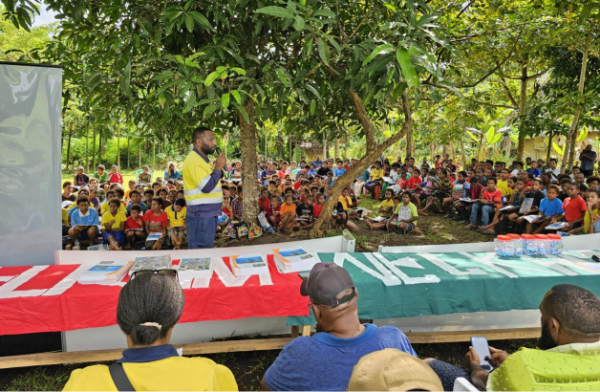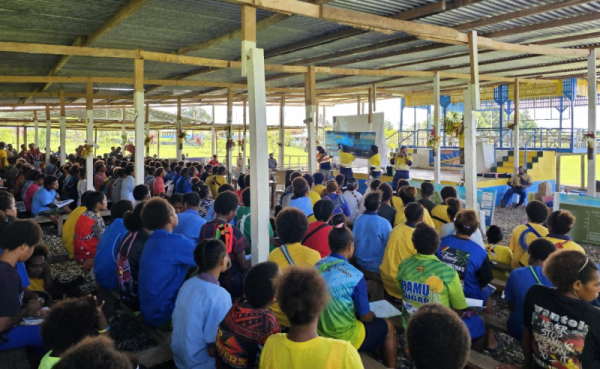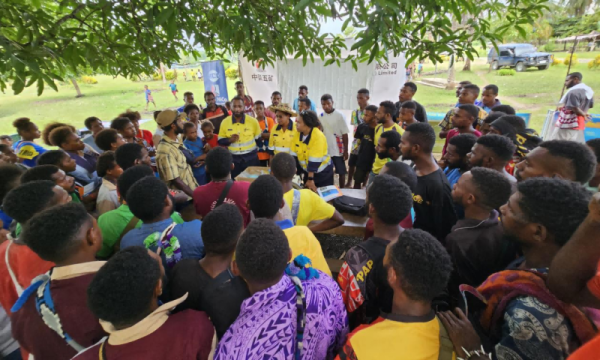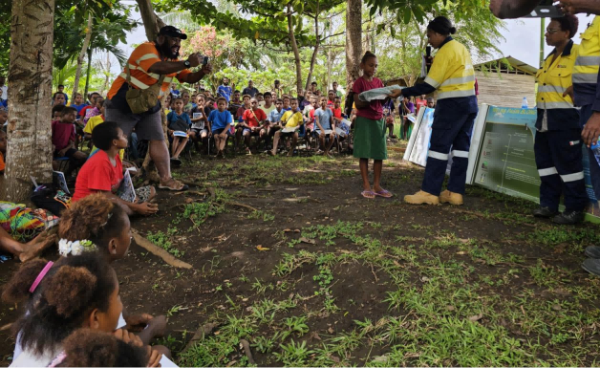From May 19 to 23 of the year 2025, RNML, in collaboration with the Mineral Resources Authority (MRA), Conservation and Environment Protection Authority (CEPA) and Madang Provincial Government (MPG) of Papua New Guinea, carried out its annual Deep Sea Tailings Placement (DSTP) environmental awareness campaign. The program was held across several primary and secondary schools in the Astrolabe Bay and Saidor areas of Madang Province. The goal of this awareness was to foster communication and mutual understanding between the company and local communities, enhance public awareness of the nickel-cobalt mining industry, and reinforce RNML’s ongoing commitment to environmental stewardship.
During the presentations, the team introduced the product characteristics, process flow, and environmental management practices of RNML, with a particular focus on the DSTP system’s stability and environmentally friendly design. This technology has been widely adopted in the mining industry in Papua New Guinea and globally, and is recognized for its high level of maturity and reliability. Additionally, the team emphasized that nickel-cobalt resource development offers significant advantages over other minerals in terms of energy efficiency, resource recovery, and emissions control, making it a highly sustainable option.
The team systematically explained the components, facilities, operational status, and environmental monitoring plan of the DSTP system. Current monitoring results indicate that the water quality in the epipelagic zone remains within normal parameters, biological communities and coral reefs are healthy and stable, and the tailings are being deposited in the deep-sea canyon as planned, where they gradually undergo mineralization without causing significant impact to the marine ecosystem. In addition, RNML conducts annual inspections of the tailings pipeline using remotely operated vehicles (ROVs) to ensure the tailings are transported safely below the ocean’s mixed layer, following processes of neutralization, dilution, and degassing, before settling into the canyon and integrating with natural sediments.
Following the lecture, the team organized a quiz and an interactive “You Ask, I Answer” session to deepen students’ understanding of environmental management in a fun and engaging way. These activities helped primary and secondary students grasp basic concepts related to deep-sea tailing management and strengthened their awareness of environmental issues. During on-site discussions with residents, the team members patiently answered questions regarding the operating mechanism of the DSTP system, its long-term environmental impact, and pipeline safety, directly addressing the community’s concerns about marine ecological protection.
After the presentation, the team engaged in further discussions with students, teachers, and local community representatives. Students raised questions about the fundamental concept of “environmental protection” and the operation of marine ecosystems, to which the team responded with easy-to-understand explanations supported by real-world examples, helping young participants build a scientific understanding of environmental issues. Meanwhile, local residents focused on the potential impacts of tailing (including gases) on offshore fishery resources, drinking water safety, and public health. The team addressed each concern in detail, referencing current environmental monitoring data as well as the technical methodology, monitoring framework, and operational history of the DSTP system.
Through this outreach campaign, the presentation team and the community reached a broader consensus on environmental management concepts and future cooperation. Community members, teachers, and students expressed hope for mutual visits and collaboration. The team reiterated its commitment to maintaining openness and transparency, actively listening to all stakeholders, fostering collective participation, and continuously improving the content and delivery of environmental awareness. Both sides agreed to work together to promote the sustainable development of the project while safeguarding the long-term health and safety of the local ecological environment.




